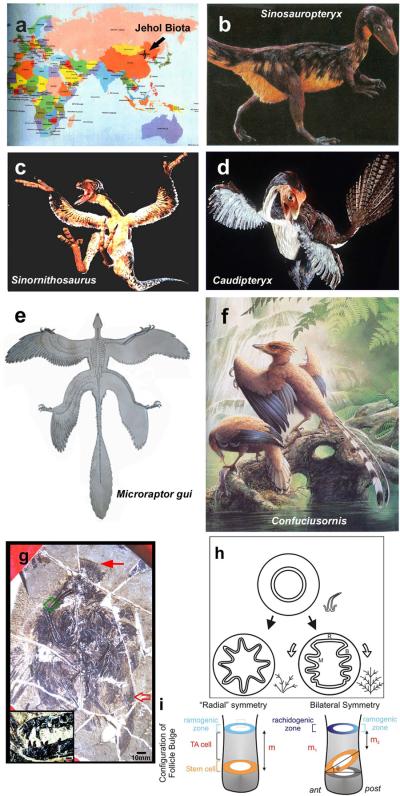Figure 5.
Representatives of feathered dinosaurs and Mesozoic birds from Jehol Biota. a. Map showing the location of the excavated site. b. Sinosauropteryx. c. Sinornithosaurus. d. Caudipteryx. e. Microraptor gui. f. Confuciusornis. Panels b–d reprinted with permission from National Geographic89. Panel e is from Xu et al., 200390. Panel f is from Hou et al., 200391. g. Longirostrornis fossil, primarily in dorsal view. Inset, close up of beak and teeth. h. Model of branching morphogenesis responsible for radial vs bilateral symmetric feathers based on feather cross sections. It shows the barb ridge formation is basically a periodic patterning process. See text for more. i. Schematic depicting the tilting of feather stem cell ring (orange color) leads to the symmetric breaking at ramogenic zone (region where periodic patterning of barb ridges takes place, blue color), thus making radial vs bilateral symmetric feathers.

